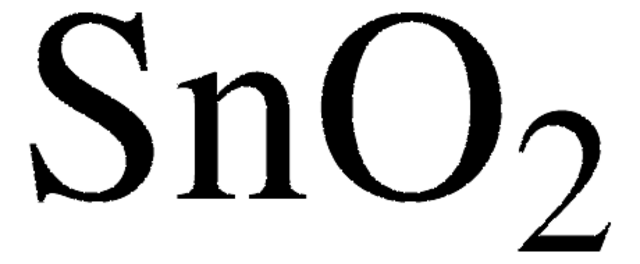205532
Zinc oxide
ReagentPlus®, powder, <5 μm particle size, 99.9%
Sign Into View Organizational & Contract Pricing
All Photos(3)
About This Item
Linear Formula:
ZnO
CAS Number:
Molecular Weight:
81.39
EC Number:
MDL number:
UNSPSC Code:
12352302
PubChem Substance ID:
NACRES:
NA.55
Recommended Products
product line
ReagentPlus®
Assay
99.9%
form
powder
particle size
<5 μm
SMILES string
O=[Zn]
InChI
1S/O.Zn
InChI key
XLOMVQKBTHCTTD-UHFFFAOYSA-N
Looking for similar products? Visit Product Comparison Guide
Application
Employed in the preparation of NaZnSiO3OH, a novel chiral framework material which has potential application in ion exchange, adsorption or catalysis.
Employed in the preparation of NaZnSiO3OH, a novel chiral framework material which has potential application in ion exchange, adsorption or catalysis.
Legal Information
ReagentPlus is a registered trademark of Merck KGaA, Darmstadt, Germany
Signal Word
Warning
Hazard Statements
Precautionary Statements
Hazard Classifications
Aquatic Acute 1 - Aquatic Chronic 1
Storage Class Code
11 - Combustible Solids
WGK
WGK 2
Flash Point(F)
Not applicable
Flash Point(C)
Not applicable
Certificates of Analysis (COA)
Search for Certificates of Analysis (COA) by entering the products Lot/Batch Number. Lot and Batch Numbers can be found on a product’s label following the words ‘Lot’ or ‘Batch’.
Already Own This Product?
Find documentation for the products that you have recently purchased in the Document Library.
Customers Also Viewed
Piezoelectric nanogenerators based on zinc oxide nanowire arrays.
Wang ZL and Song J.
Science, 312(5771), 242-246 (2006)
Localized fluorescent complexation enables rapid monitoring of airborne nanoparticles
Meng F, et al.
Environmental science. Nano, 1(4), 358-366 (2014)
A. M. Healey et al.
Inorganic chemistry, 38(3), 455-458 (2001-10-25)
The structure of NaZnSiO(3)OH, synthesized hydrothermally by reaction of Na(2)ZnSiO(4) and NaOH, has been determined from single-crystal X-ray and powder neutron diffraction data (orthorhombic, space group P2(1)2(1)2(1,) a = 7.6872(2) Å, b = 9.3899(2) Å, c = 5.155(1) Å, Z
A Ra Kim et al.
Journal of biomedical nanotechnology, 9(5), 926-929 (2013-06-28)
Our innate immunity is composed of several integral leukocytes including neutrophil, NK cell, macrophage or so. They are usually known to produce reactive oxygen species (ROS), in order to induce cell damages by these oxidizing reagents, and finally disrupting mitochondrial
Xiaolong Li et al.
Journal of nanoscience and nanotechnology, 13(8), 5859-5863 (2013-07-26)
In this study, we present the synthesis of ZnO nanowire by hydrothermal process through reutilization of sludge from soy sauce wastewater electrochemical treatment. The influences of floc content and caramel pigment concentration on the morphologies of ZnO were studied. The
Our team of scientists has experience in all areas of research including Life Science, Material Science, Chemical Synthesis, Chromatography, Analytical and many others.
Contact Technical Service




